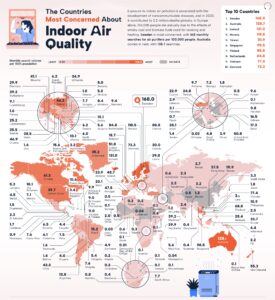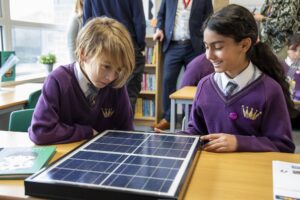Cutting air pollution could halve the number of children with poor lung function
Reducing air pollution around schools could halve the number of children suffering from lung function so poor it affects their everyday lives, according to research conducted by Queen Mary University of London (QMUL).
According to the research, a reduction in air pollution during the lockdown period saw asthma attacks in children almost disappear.
The researchers have highlighted that the most positive improvements to children’s lung function are likely to be realised if changes are made at schools in the most polluted areas of the country.
Based on these findings, Global Action Plan and the Phillips Foundation, who commissioned the research, have formed a coalition with other charities to call for nationwide action to improve air quality in and around schools.
The organisations are calling for the government to introduce a legally binding target for air pollution that is in line with the World Health Organisation (WHO) safety guidelines.
To support this movement, the coalition has launched ‘The Clean Air Schools Framework.‘ The framework is a free online tool that gives teachers, parents and local authorities a blueprint plan on how to reduce air pollution.
It is hoped that by using this framework it will enable schools to reduce their own air pollution, educate the next generation, and help them to become local leaders on air pollution.
Chris Large, Co-CEO at Global Action Plan said: ‘Local authorities must take advantage of free tools such as the Clean Air for Schools Framework, as the analysis by Queen Mary University of London shows, air pollution impacts the daily lives of so many children.
‘But they must act now. The results of our most recent “Build Back Cleaner Air” report found that clean air practices can help to reduce the spread and exacerbation of COVID-19.
Therefore, protecting today’s generation of school children against the toxins carried by air pollution is not only imperative to preventing damage to children’s daily health but also to reduce the impact of this pandemic and future pandemics.’
Photo Credit – Pixabay













